Temple Headache Relief: Understanding Symptoms, Causes, and Effective Treatments
What are the common types of temple headaches. How can you identify the symptoms of tension headaches, migraines, and temporal arteritis. What are the most effective treatments for temple pain. How do temporomandibular joint disorders contribute to headaches.
Common Types of Temple Headaches: Unraveling the Pain
Temple headaches can be particularly distressing, often interfering with daily activities and overall quality of life. Understanding the different types of headaches that can cause temple pain is crucial for effective management and treatment. Let’s explore the most common types of temple headaches and their distinct characteristics.
Tension Headaches: The Everyday Culprit
Tension headaches are the most prevalent type of headache, often characterized by a dull, non-throbbing pain. They can manifest in various ways, including:
- Pain in the forehead
- Discomfort in the neck or the back of the head
- A sensation of pressure or squeezing around the head
These headaches are typically rooted in the neck muscles at the base of the skull. They can be episodic, occurring occasionally due to stress or fatigue, or chronic, happening multiple times a week or even continuously.
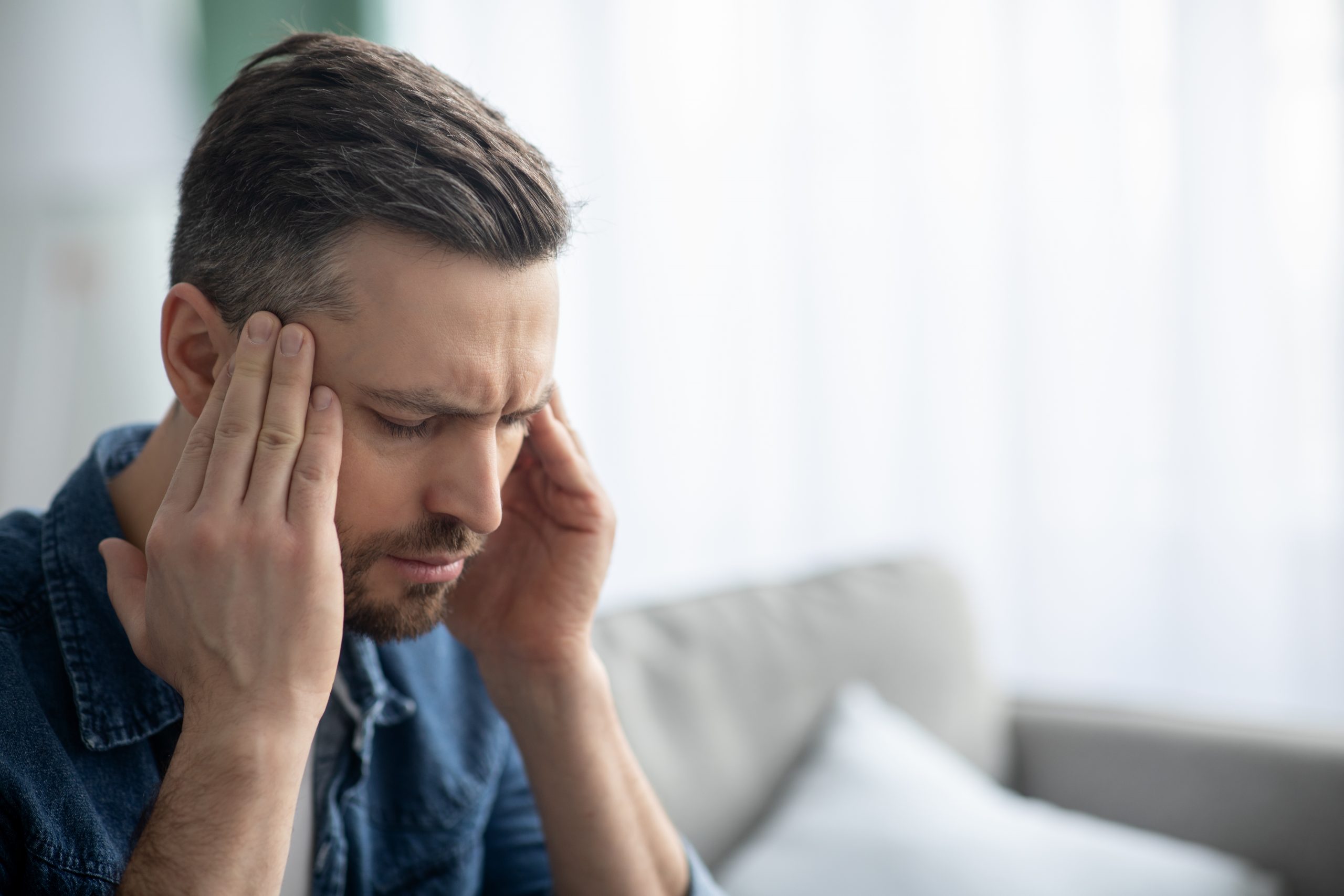
Migraine Headaches: The Throbbing Menace
Migraines often begin with pain in the temples, which can either spread to both sides or remain localized on one side of the head. The pulsating nature of migraine pain sets it apart from tension headaches. Migraine symptoms can vary widely among individuals but may include:
- Nausea and vomiting
- Sensitivity to light and sound
- Visual disturbances (aura)
- Dizziness
Without treatment, migraines can persist for 4 to 24 hours, significantly impacting daily functioning.
Temporal Arteritis: A Serious Concern
Temporal arteritis is a condition that requires immediate medical attention. It often begins with throbbing pain in one temple, similar to a migraine. However, temporal arteritis is distinguished by tenderness in the temples when touched. Other symptoms may include:
- Jaw pain while chewing
- Vision problems
- Fatigue
- Fever
- Unexplained weight loss
This condition is characterized by swollen temporal arteries, which can reduce blood flow to critical areas of the head, potentially leading to vision problems or even stroke in severe cases.

Identifying the Root Causes of Temple Headaches
To effectively manage temple headaches, it’s essential to understand their underlying causes. While the exact triggers can vary from person to person, several common factors contribute to the development of these headaches.
Stress and Muscle Tension
Stress is a significant contributor to tension headaches. When we’re under stress, our muscles tend to tighten, particularly in the neck and shoulders. This tension can radiate to the temples, causing discomfort and pain. Additionally, poor posture, especially when working at a desk for long hours, can exacerbate muscle tension and lead to headaches.
Hormonal Changes
Hormonal fluctuations, particularly in women, can trigger migraines and other types of headaches. Changes in estrogen levels during menstruation, pregnancy, or menopause are often associated with an increased frequency of headaches.
Dietary Factors
Certain foods and beverages can trigger headaches in susceptible individuals. Common culprits include:

- Caffeine (both excessive consumption and withdrawal)
- Alcohol, especially red wine
- Processed foods high in preservatives
- Aged cheeses
- Chocolate
Identifying and avoiding personal dietary triggers can significantly reduce the frequency of temple headaches.
Environmental Factors
Various environmental stimuli can provoke headaches, including:
- Bright or flickering lights
- Loud noises
- Strong odors
- Changes in weather or barometric pressure
Being aware of these potential triggers can help individuals take preventive measures to avoid headaches.
Effective Treatments for Temple Headaches: Finding Relief
While temple headaches can be debilitating, there are numerous treatment options available to alleviate pain and prevent future episodes. The most appropriate treatment depends on the type and severity of the headache.
Over-the-Counter Pain Relievers
For many tension headaches and mild migraines, over-the-counter pain medications can provide significant relief. Common options include:

- Acetaminophen (Tylenol)
- Ibuprofen (Advil, Motrin)
- Aspirin
- Naproxen (Aleve)
It’s important to use these medications as directed and avoid overuse, which can lead to rebound headaches.
Prescription Medications for Migraines
For more severe or frequent migraines, prescription medications may be necessary. These can include:
- Triptans (e.g., sumatriptan, rizatriptan)
- Ergotamines
- CGRP antagonists (e.g., rimegepant, ubrogepant)
- Preventive medications (e.g., beta-blockers, antidepressants, anticonvulsants)
A healthcare provider can help determine the most appropriate medication based on individual symptoms and medical history.
Non-Pharmacological Approaches
In addition to medication, several non-pharmacological treatments can be effective in managing temple headaches:
- Stress reduction techniques (e.g., meditation, deep breathing exercises)
- Regular exercise
- Adequate sleep
- Acupuncture
- Massage therapy
- Biofeedback
These approaches can be particularly beneficial for preventing headaches and reducing their frequency.

The Role of Temporomandibular Joint Disorders in Temple Headaches
Temporomandibular joint (TMJ) disorders are a common, yet often overlooked, cause of temple headaches. These disorders affect the joint that connects the jawbone to the skull, leading to various symptoms including pain in the temples.
Understanding TMJ Disorders
TMJ disorders can result from a variety of factors, including:
- Teeth grinding (bruxism)
- Jaw clenching
- Arthritis in the joint
- Injury to the jaw
- Misalignment of the jaw
The pain from TMJ disorders often radiates to the temples, causing headaches that can be mistaken for tension headaches or migraines.
Symptoms of TMJ-Related Temple Headaches
In addition to temple pain, TMJ disorders can cause:
- Clicking or popping sounds when opening or closing the mouth
- Difficulty or pain when chewing
- Jaw locking
- Ear pain or ringing in the ears
If you experience these symptoms along with temple headaches, it’s important to consult a dentist or healthcare provider for proper diagnosis and treatment.

Preventive Strategies for Temple Headaches: Taking Control
While treatment options are available for temple headaches, prevention is often the best approach. By implementing certain lifestyle changes and developing healthy habits, individuals can significantly reduce the frequency and severity of their headaches.
Maintaining a Consistent Sleep Schedule
Irregular sleep patterns can trigger headaches in many people. Aim for 7-9 hours of sleep per night and try to go to bed and wake up at the same time each day, even on weekends. Creating a relaxing bedtime routine can help improve sleep quality and reduce the likelihood of waking up with a headache.
Managing Stress Effectively
Stress is a common trigger for various types of headaches. Incorporating stress-management techniques into your daily routine can be highly beneficial:
- Practice mindfulness meditation
- Engage in regular physical exercise
- Try progressive muscle relaxation
- Consider cognitive-behavioral therapy
Finding healthy ways to cope with stress can significantly reduce the frequency of temple headaches.

Maintaining Proper Hydration and Nutrition
Dehydration and skipping meals can both trigger headaches. Ensure you’re drinking enough water throughout the day and eating regular, balanced meals. Some individuals find that certain dietary changes can help prevent headaches:
- Limiting caffeine intake
- Avoiding known food triggers
- Eating a diet rich in fruits, vegetables, and whole grains
- Reducing processed food consumption
Keeping a food diary can help identify potential dietary triggers specific to you.
When to Seek Medical Attention for Temple Headaches
While many temple headaches can be managed at home, certain situations warrant immediate medical attention. It’s crucial to recognize the signs that indicate a potentially serious condition.
Red Flags for Serious Headaches
Seek immediate medical care if you experience any of the following:
- Sudden, severe headache often described as “the worst headache of your life”
- Headache accompanied by fever, stiff neck, confusion, or rash
- Headache following a head injury
- Headache with neurological symptoms such as weakness, numbness, or speech difficulties
- New onset of headaches after age 50
- Headaches that worsen with coughing, exertion, or sudden movement
These symptoms could indicate serious conditions such as meningitis, stroke, or intracranial bleeding, which require immediate medical intervention.
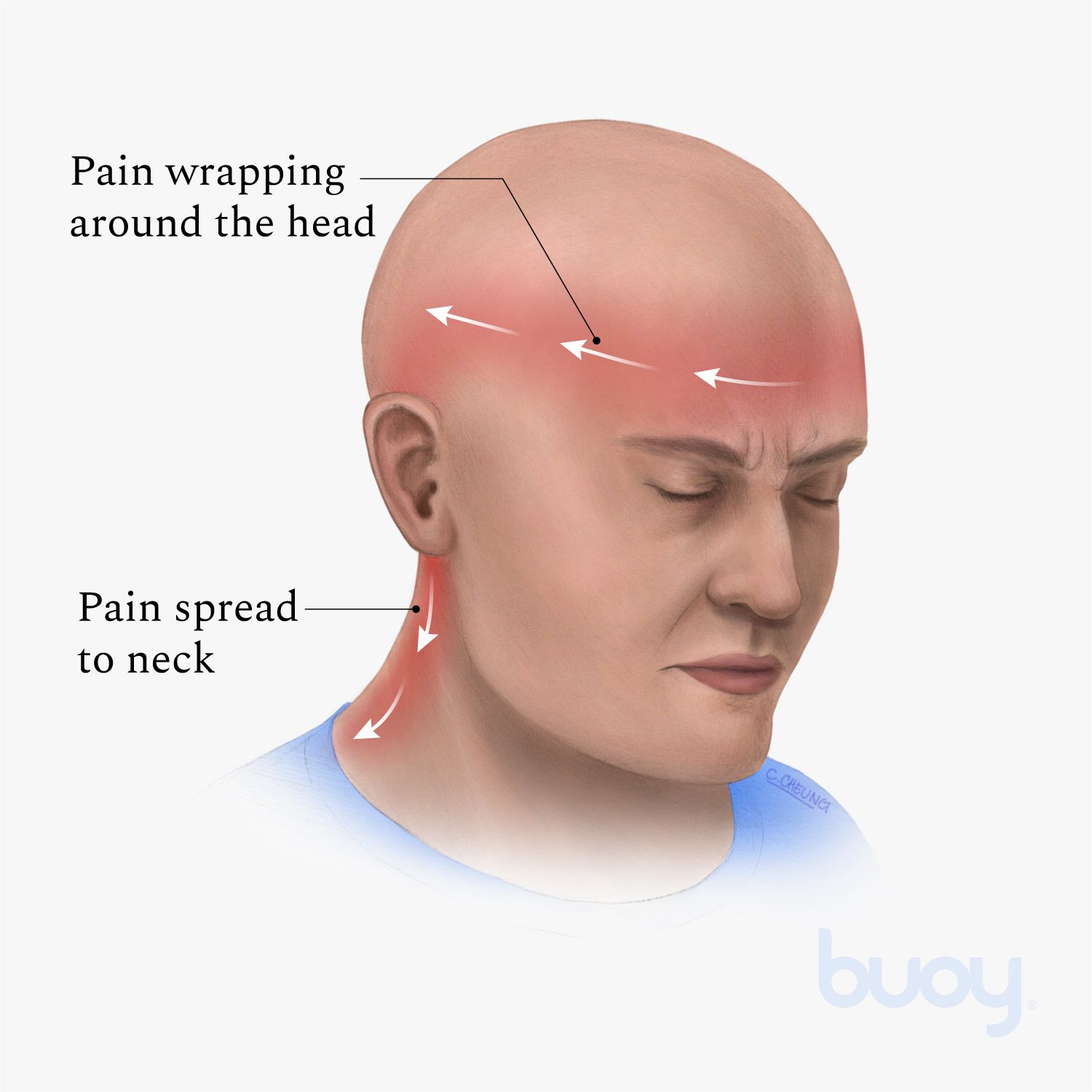
Chronic Headache Management
If you’re experiencing frequent headaches that are impacting your quality of life, it’s important to consult a healthcare provider. They can help develop a comprehensive treatment plan, which may include:
- Preventive medications
- Lifestyle modifications
- Referral to a headache specialist
- Further diagnostic tests to rule out underlying conditions
Remember, chronic headaches are not normal and should not be ignored. With proper medical care, most individuals can find significant relief and improved quality of life.
Innovative Treatments on the Horizon: The Future of Temple Headache Relief
As medical research continues to advance, new and promising treatments for temple headaches are emerging. These innovative approaches offer hope for individuals who have not found relief through traditional methods.
Neuromodulation Techniques
Neuromodulation involves using electrical or magnetic stimulation to alter nerve activity. Several neuromodulation devices have shown promise in treating various types of headaches:

- Transcutaneous supraorbital nerve stimulation (tSNS)
- Single-pulse transcranial magnetic stimulation (sTMS)
- Vagus nerve stimulation (VNS)
- Occipital nerve stimulation
These non-invasive or minimally invasive techniques can provide relief for some patients with chronic headaches, including migraines.
Monoclonal Antibodies for Migraine Prevention
A new class of drugs known as calcitonin gene-related peptide (CGRP) monoclonal antibodies has shown significant promise in preventing migraines. These medications include:
- Erenumab (Aimovig)
- Fremanezumab (Ajovy)
- Galcanezumab (Emgality)
- Eptinezumab (Vyepti)
These drugs work by blocking the CGRP pathway, which is believed to play a crucial role in migraine development. They are administered via monthly or quarterly injections and have shown promising results in reducing the frequency of migraines.
Botulinum Toxin Injections
While not entirely new, the use of botulinum toxin (Botox) injections for chronic migraine prevention has gained increasing acceptance. This treatment involves injecting small amounts of Botox into specific points around the head and neck, which can help reduce the frequency and severity of migraines in some patients.
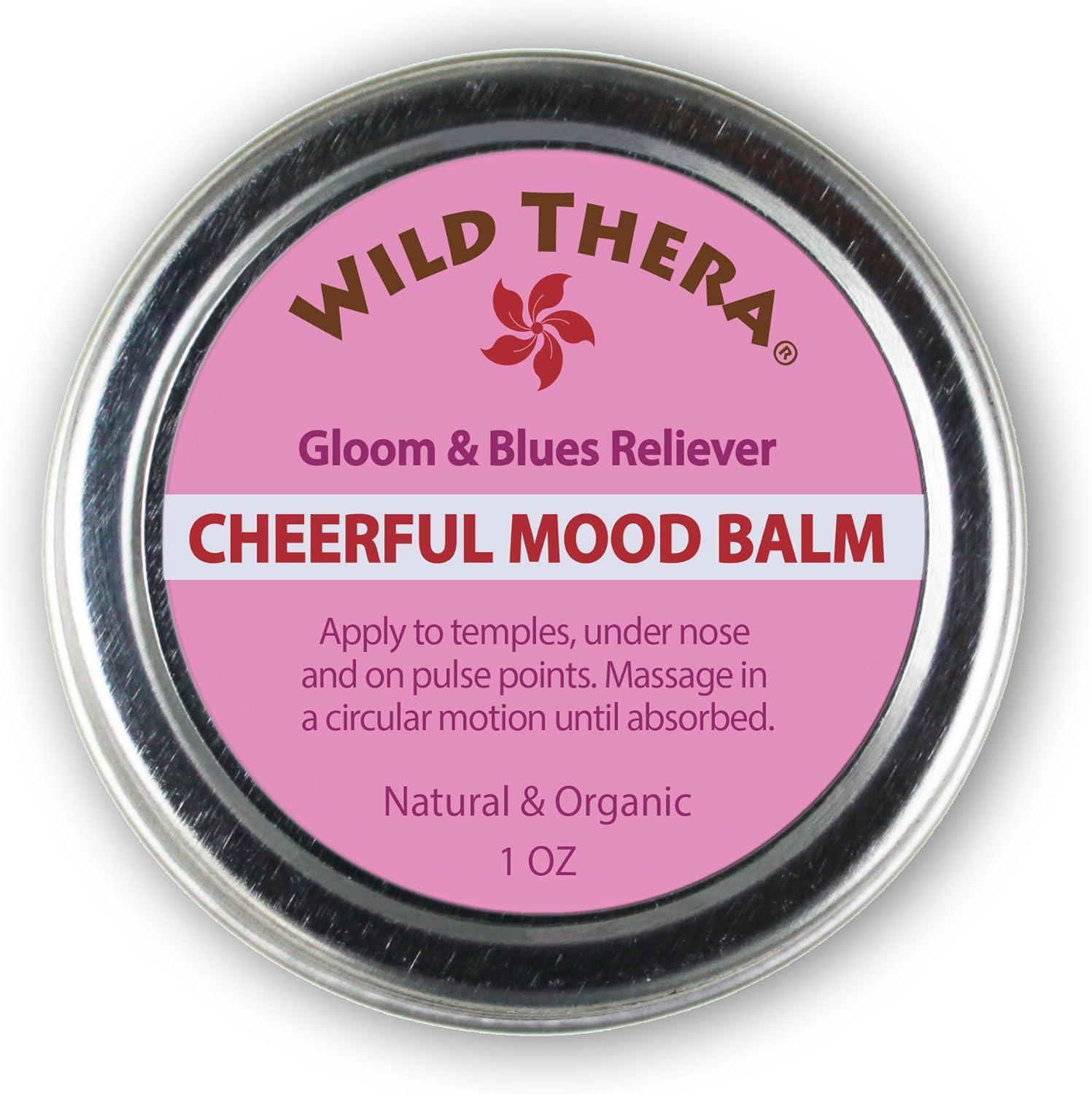
Personalized Medicine Approaches
As our understanding of the genetic and molecular basis of headaches improves, there is growing interest in personalized medicine approaches. These may include:
- Genetic testing to predict medication response
- Biomarker-based treatment selection
- Tailored lifestyle interventions based on individual risk factors
While still in the early stages, these approaches hold promise for more effective and targeted headache treatments in the future.
As research continues to evolve, it’s important for individuals suffering from temple headaches to stay informed about new treatment options. Consulting with a headache specialist can provide access to the latest therapies and clinical trials, potentially offering new avenues for relief.
Understanding the complexities of temple headaches, from their various types and causes to the range of available treatments, empowers individuals to take control of their health. By working closely with healthcare providers, implementing preventive strategies, and staying open to new therapeutic approaches, many people can find significant relief from the burden of temple headaches. Remember, effective management often requires a multifaceted approach, combining medical treatments with lifestyle modifications tailored to individual needs. With persistence and the right care, it’s possible to reduce the impact of temple headaches and improve overall quality of life.

Temple Headaches: Symptoms, Causes, Treatments
When you have a headache in your temples, figuring out what type of headache you have is a good step toward relief. A few different types of headaches can cause pain in your temples.
Tension Headache
The most common type of headache, tension headaches usually cause a dull, non-throbbing pain. You might feel:
- Pain in your forehead
- Pain in your neck or the back of your head (tension headaches are rooted in the neck muscles at the base of your skull)
- A feeling of your head being pressed or squeezed
In most cases the pain goes away when you take an over-the-counter pain reliever.
Some people get tension headaches once in a while when they’re under stress or tired. These are called episodic tension headaches. Other people get chronic tension headaches, which means they happen multiple times a week — or even all the time.
You likely can treat your tension headache yourself. Try taking an over-the-counter pain reliever such as acetaminophen (Panadol, Tylenol), aspirin (Bayer, Buffrin), or ibuprofen (Advil, Motrin, Nuprin). Sometimes a nap will do the trick, too.
Try taking an over-the-counter pain reliever such as acetaminophen (Panadol, Tylenol), aspirin (Bayer, Buffrin), or ibuprofen (Advil, Motrin, Nuprin). Sometimes a nap will do the trick, too.
If you take medicine daily and your headaches aren’t going away, tell your doctor. They may be able to give you a prescription or a referral to a headache specialist.
Migraine Headache
While migraine symptoms vary from person to person, a common place for migraine pain to start is in your temples. The pulsating pain may spread to both temples but often stays on just one side of your head.
Other symptoms of a migraine can include:
Without treatment, a migraine can last anywhere from 4 to 24 hours. The treatment for migraines varies depending on the symptoms and amount of pain.
If you feel a migraine coming on, consider a nonprescription pain reliever such as acetaminophen, aspirin, or ibuprofen. Caffeine can help, too, so try sipping a cup of coffee or tea. Some people use ice packs.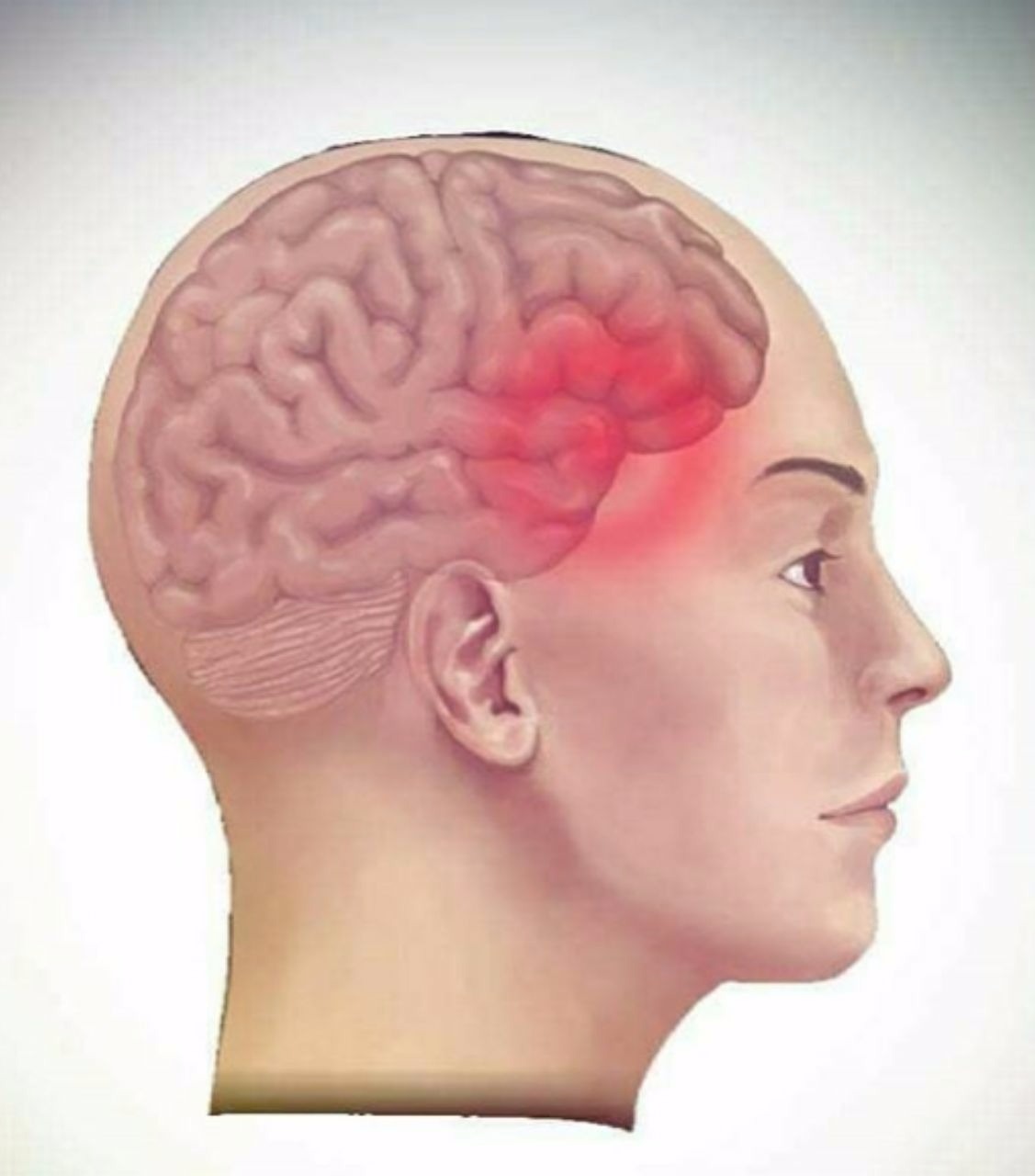
If that doesn’t help, you may need to see your doctor for a stronger treatment plan. They may prescribe nausea medication or a triptan drug such as almotriptan (Axert), eletriptan (Relpex), frovatriptan (Frova), imigran (Imitrex, Onzetra Xsail, Sumavel, Zembrace), naratriptan (Amerge, Naramig), rizatriptan, sumatriptan, or zolmitriptan (Zomig). Triptans stimulate serotonin in your brain and usually stop the migraine in 2 hours. It can be taken as a tablet, nasal spray, or injection. Other prescription strength medicines that are available to treat a migraine are ditans such as lasmiditan (Reyvow) which are similar to triptans, and gepants like rimegepant (Nurtec) and ubrogepant (Ubrelvy) that block the calcitonin gene-related peptide (CGRP).
Temporal Arteritis
Temporal arteritis may feel like a migraine at first, as it starts with throbbing in the temple on one side of your head. But unlike a migraine, temporal arteritis makes your temples tender to the touch. And the throbbing may be constant. This is a condition that needs medical help right away.
This is a condition that needs medical help right away.
Other symptoms of temporal arteritis can include:
Temporal arteritis is when the temporal arteries on the sides of your head are swollen, which reduces blood flow. (It’s sometimes called giant cell arteritis.) These arteries deliver blood to your eyes, brain, and more. In severe cases, the artery could become completely blocked. If that happens, you may be at risk for vision problems or even a stroke.
To diagnose the condition, doctors will test your blood for its sedimentation rate. Basically, that means how quickly your red blood cells sink to the bottom of a test tube. A faster rate means there may be inflammation in your arteries.
Your doctor may recommend taking a biopsy of the artery to confirm the diagnosis. For temporal arteritis, your doctor may prescribe a steroid to reduce inflammation in your arteries.
Temporomandibular Joint Disorders
Another cause of temple pain is TMJ, or temporomandibular joint disorders. TMJ causes pain in the muscles and joints in your jaw. Other symptoms include:
TMJ causes pain in the muscles and joints in your jaw. Other symptoms include:
- Pain in your temples
- Pain in any part of your head that involves chewing, such as the jaw or neck
- Clicking or popping sounds in your jaw
- Your teeth fit together differently
Your doctor or dentist can diagnose TMJ. Sometimes it goes away without treatment. Sometimes stopping a bad habit, such as grinding your teeth or chewing your fingernails, will help.
But if the pain continues, then your doctor may recommend:
- Over-the-counter pain medication
- Muscle relaxants
- Physical therapy
- Corticosteroid injections
- Arthroscopic surgery
Advice on What’s Causing Your Headaches
As a neurologist at Temple Health, I tend to get a lot of questions about headaches. Naturally, some of the most common questions are what causes headaches and are there ways to alleviate them. It’s probably not a coincidence if you’re noticing more headaches recently. Many types of headaches are triggered by stress.
Many types of headaches are triggered by stress.
During a universally stressful time such as the COVID-19 pandemic, it’s especially important to keep yourself healthy and reduce stressors as much as possible. Doing so may also relieve your headaches.
Here, I review some of the most common headache questions and provide some advice on what you can do to prevent headaches from occurring, even during these challenging times.
Jump to:
What’s the difference between a headache and a migraine?
There are actually many types of headaches, but two of the most common are tension headaches and migraine headaches.
Tension Headaches
Tension headaches tend to come on as a result of physical, emotional or mental stress. Some examples include stress from working on an intense deadline, from lack of sleep or from ongoing anxiety.
The pain from tension headaches is usually mild to moderate, and it feels like someone is squeezing or putting pressure on your head, face or neck.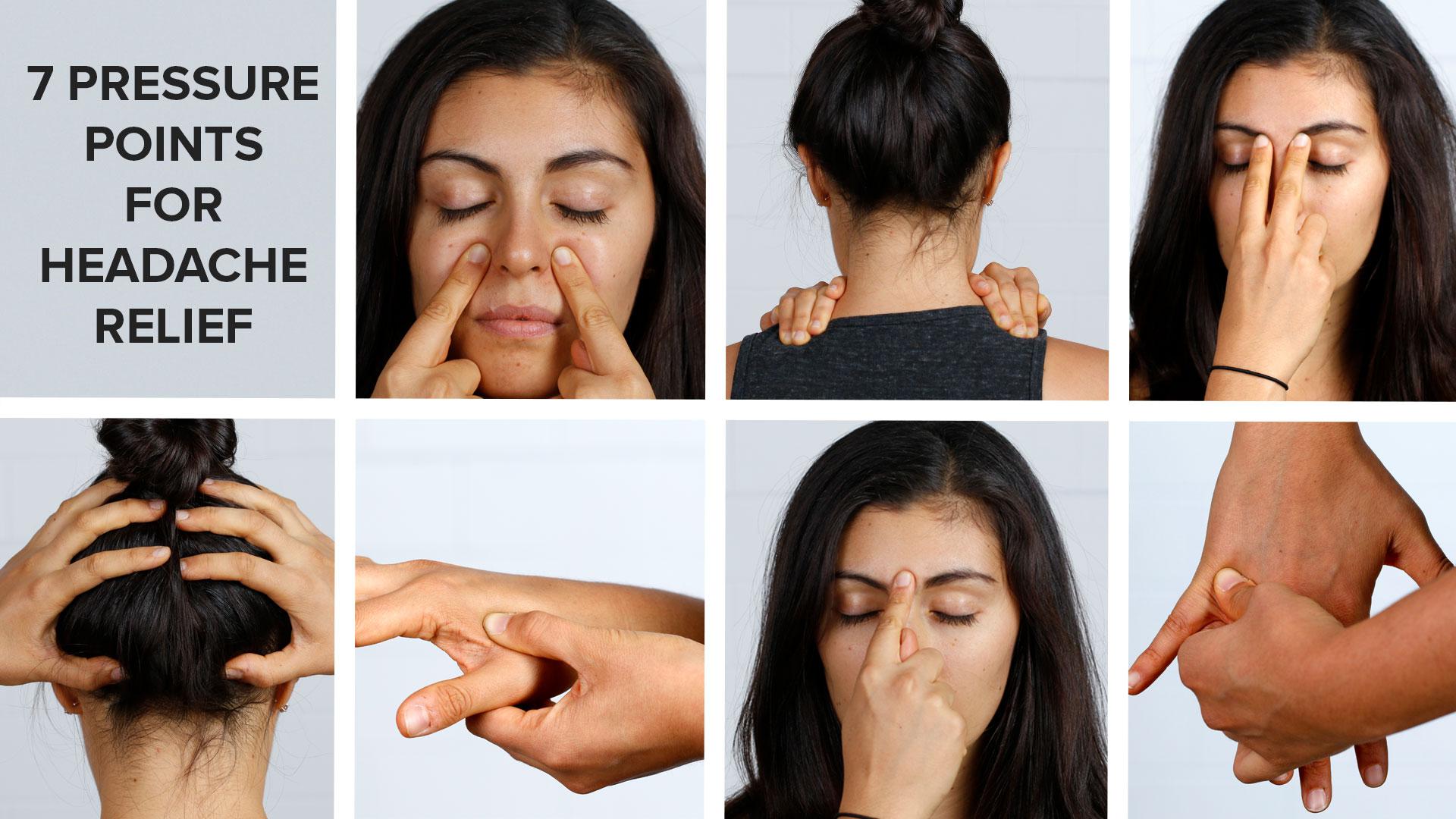 Most of the time, the pain is felt on both sides. Tension headaches usually resolve when the stress resolves, but certain types of tension headaches can occur consistently over weeks or months.
Most of the time, the pain is felt on both sides. Tension headaches usually resolve when the stress resolves, but certain types of tension headaches can occur consistently over weeks or months.
Migraine Headaches
Migraine headaches are associated with throbbing or pulsing pain, usually on one side of the head. Along with the pain, you may be sensitive to light, sounds or odors, or may feel nauseous and vomit.
As with tension headaches, stress can play a role, as well as things like lack of sleep, hormonal changes, changes in the weather or low blood sugar. Migraine can resolve on its own with symptom management, but if you have repeated episodes, you may need to seek help to understand what’s causing your migraines.
Back to top >
Why am I experiencing more headaches than usual?
As a nation, we experience a huge amount of stress every day, whether it’s from work, carting our kids around or eating unhealthy foods. Everyday stress can certainly trigger headaches.
If you do start experiencing chronic headaches, you may want to take a step back and evaluate some of your behaviors to see where you can eliminate stressors.
You may also experience headaches more often during or shortly after unusual times of stress. More recently, for example, our collective experience of the COVID-19 pandemic has put everyone on edge. Worrying about our families, social distancing from work and our regular routines, and just listening to the news can leave us feeling anxious, upset and out of control. We don’t sleep as well and there are moments when we tend to get down. All of these things lead to behaviors that can trigger a headache.
When you do not sleep well, you can experience headaches the following day. Also, drinking alcohol and too much caffeine and smoking can lead to worse headaches.
Sometimes, when you finally are done with a stressful event, like taking a test or completing a hard workweek, you may find that when you try to relax, you experience a headache.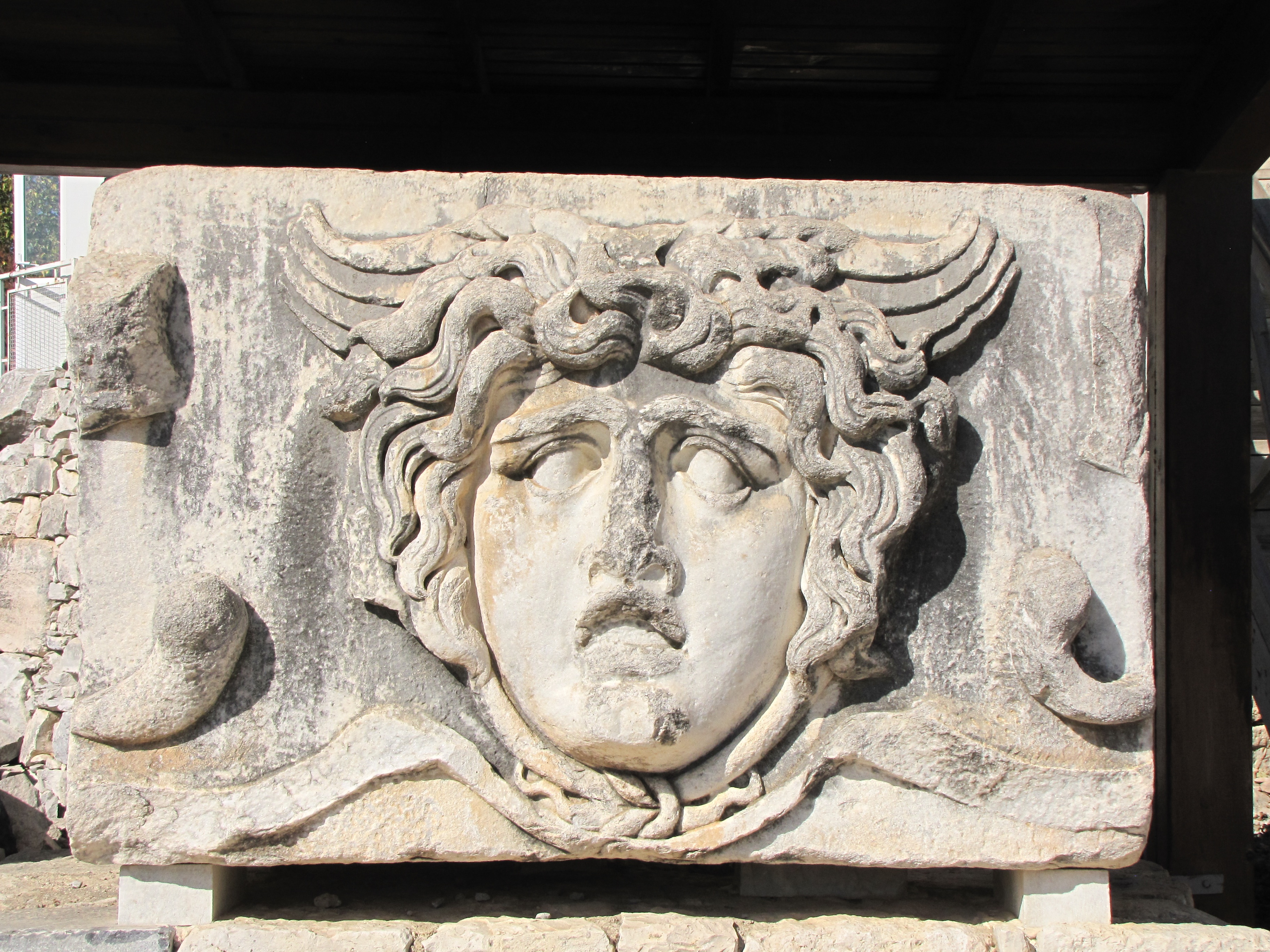 This is called the “stress let-down” response, and it happens because our cortisol, or stress hormone, keeps our bodies up and running when we really need to rest. Headaches happen when that stress hormone finally releases.
This is called the “stress let-down” response, and it happens because our cortisol, or stress hormone, keeps our bodies up and running when we really need to rest. Headaches happen when that stress hormone finally releases.
Back to top >
What are food triggers that could be causing my headaches?
Many patients report that migraine headaches are triggered by food or food ingredients. These include:
- Alcohol
- Aspartame, a sugar substitute
- Caffeine (more often, caffeine withdrawal)
- Wine
- Cured meats
- Fermented foods
- MSG (monosodium glutamate), a food additive that enhances the flavor
- Some types of cheese
If you start experiencing frequent migraines, make note of what you’re eating on those days. It may be helpful to keep a food diary.
If you get migraines more often when you eat or drink a specific food, try eliminating it from your diet for a couple of weeks. It’s a process of trial and error, but if food is the culprit of your pain, replacing that food with an alternative or abstaining from it altogether may help.
It’s a process of trial and error, but if food is the culprit of your pain, replacing that food with an alternative or abstaining from it altogether may help.
Back to top >
What types of things can I do to help alleviate my headaches?
For both tension and migraine headaches, I usually tell patients to think about some of the triggers that may be causing their pain. We can then work backward and make changes that help prevent or alleviate the pain.
Some prevention techniques you can try during social distancing (also known as physical distancing) include:
Act like a scientist and track your behaviors. On the day your headache occurred, did you drink too little water? Did you eat a certain combination of foods? Was your sleep schedule interrupted? Looking for patterns then making small changes can often help you overcome your pain.
Back to top >
Should I take over-the-counter medication?
Taking over-the-counter remedies too often can in fact make headaches more likely to come back. If you’re finding this is happening to you, speak with your doctor.
If you’re finding this is happening to you, speak with your doctor.
Back to top >
4 Ancient Tricks for Instant Headache Relief
Our Pharmacy in Beverly Hills knows that many people suffer from constant headaches and migraines. Although many people just suffer through them or take over the counter medication, there are other ways to relieve yourself from the pain!
Did you know that ancient Tibetans applied pressure to certain spots of their bodies in order to relieve their headaches? This method, called acupressure, has been proven to be incredibly effective. Here are our tricks to help you.
1. Massage Between the Eyebrows
Try applying steady pressure the area between your eyebrows and above the bridge of your nose. Apply this pressure for several minutes repeatedly until you feel as though your pain is starting to relent. Touching this pressure point can aid in relief from pain caused by indigestion and eyestrain.
2. Massage Your Temples
Your temples, or the sides of your forehead, are other pressure points that can be touched with acupressure. Use your thumbs or the tips of your index finger to apply steady pressure to your temples; try moving your fingers in small circular motions until the pain subsides.
Use your thumbs or the tips of your index finger to apply steady pressure to your temples; try moving your fingers in small circular motions until the pain subsides.
3. Massage the Back of Your Neck
Try pressing the back of your neck with the very tip of your index finger; this can help your migraine or a headache go away almost instantly. This works so quickly because the muscles in this area tighten when experiencing stress, this causes your head to ache. Therefore, directly targeting this spot is extremely effective.
4. Massage Between Your Big and Second Toes
This may seem like a weird pressure point to focus on, but there are many parts of the body that are interconnected despite not being next to each other. This spot in your foot can help you alleviate your headache or a migraine just as quickly as focusing on a spot on your head.
About Pharmacy of Beverly Hills
Pharmacy of Beverly Hills is dedicated to providing their patients with accurate medical information. Stay in touch by following us on Facebook and Twitter. Do want to learn more ways to relieve headaches or migraines? Our pharmacy in Beverly Hills recommends this article here.
Stay in touch by following us on Facebook and Twitter. Do want to learn more ways to relieve headaches or migraines? Our pharmacy in Beverly Hills recommends this article here.
Tension-Type Headache (TTH) | American Migraine Foundation
The Basics of Tension-Type Headaches
Tension-type headaches are the most common form of headache, occurring in about three-quarters of the general population. They can range from the occasional mild headache to daily disabling headaches in some cases.
Tension-type headaches have been called by various names over the years, including tension headache, muscle contraction headache, psychomyogenic headache, stress headache, ordinary headache, essential headache, idiopathic headache, and psychogenic headache. Of those names, only “tension headaches” is still fairly frequently used.
As you can see from the names that tension-type headache has been known by, it was at one time thought that the cause of tension-type headache was primarily psychological, caused by the mind or emotions. There have now been studies that strongly suggest a physical (neurobiological) cause.
There have now been studies that strongly suggest a physical (neurobiological) cause.
Symptoms of Tension-Type Headaches
Tension-type headaches most commonly last from 30 minutes to seven days. The pain is commonly described on both sides of the head (bilateral), as “a band around the head” or vice-like. The pain is generally mild to moderate and is not worse with routine physical activity, which means that most people with tension-type headache continue about their normal daily activities despite having their headache.
A tension-type headache is not accompanied by nausea or vomiting. It may be accompanied by increased sensitivity to light or sound, but not both. It may be associated with tenderness of the pericranial (head and neck) muscles, particularly with increased frequency of tension-type headache attacks.
Please refer to the International Classification of Headache Disorders 3rd edition (beta version) website for more information on the criteria used to diagnosis tension-type headache: https://www. ichd-3.org/2-tension-type-headache/
ichd-3.org/2-tension-type-headache/
Types of Tension-Type headache
Tension-type headache is broken down into three types:
- Infrequent episodic type tension-type headache: one or fewer episodes per month.
- Frequent episodic type tension-type headache: more than one, but fewer than 15 episodes per month for three or more months.
- Chronic tension-type headache: more than 15 episodes per month for three or more months. There may be mild nausea with this type of tension-type headache.
Diagnosing Tension-Type headache
There are no diagnostic tests to confirm a tension-type headache. Diagnosis is accomplished by reviewing the patient’s personal and family medical history, studying their symptoms, and conducting an examination. Because of the association of tension-type headache-like symptoms with secondary headaches (due to an underlying cause or condition), doctors should consider the possibility of a secondary headache disorder when people present with presumed tension-type headache. This is particularly important if someone develops new/different headaches or has progressive headaches that are increasing in frequency. Examples of secondary causes include medication overuse or structural brain lesions.
This is particularly important if someone develops new/different headaches or has progressive headaches that are increasing in frequency. Examples of secondary causes include medication overuse or structural brain lesions.
At times, it can be difficult to distinguish between tension-type headache and a migraine attack. Tension-type headache is not made worse by physical activity. It is not accompanied by vomiting, and if nausea is present, it is mild. A migraine attack may be accompanied by increased sensitivity to both light and sound; one or neither accompanies the tension-type headache. It is, however, possible for a tension-type headache to trigger a migraine attack.
Treatment of Tension-Type headache
Infrequent episodic tension-type headache needs only treatment for individual episodes (acute treatment). Simple analgesics, such as nonsteroidal anti-inflammatory drugs (NSAIDs) or aspirin, are reasonable choices. Sometimes combination analgesics including caffeine can be more effective; but with frequent use, side effects such as rebound headache may emerge. Use of combination therapies containing either butalbital or opioids for treatment of tension-type headache is generally not recommended because of the risk of tolerance, dependency, toxicity, and the development of medication overuse headache. Acute treatments should be limited to no more than twice per week, otherwise, they can produce medication overuse headache and may cause undesirable effects on the liver, kidneys, stomach and other organs.
Use of combination therapies containing either butalbital or opioids for treatment of tension-type headache is generally not recommended because of the risk of tolerance, dependency, toxicity, and the development of medication overuse headache. Acute treatments should be limited to no more than twice per week, otherwise, they can produce medication overuse headache and may cause undesirable effects on the liver, kidneys, stomach and other organs.
If tension-type headaches are frequent, long-lasting, or associated with a significant amount of disability, then preventive treatment is recommended. Commonly used preventive strategies include medications such as amitriptyline and non-medication treatments for headache such as biofeedback, relaxation, and cognitive-behavioral therapy, acupuncture, massage therapy or physical therapy.
Summary of Tension-Type Headaches
Unless they become frequent, tension-type headaches are usually more an annoyance than a big problem. They can often be treated with an over-the-counter medication and a bit of rest. Still to be on the safe side, a doctor should always diagnose headaches. More frequent tension-type headaches may require daily preventive medications or complementary therapies to restore health and quality of life.
They can often be treated with an over-the-counter medication and a bit of rest. Still to be on the safe side, a doctor should always diagnose headaches. More frequent tension-type headaches may require daily preventive medications or complementary therapies to restore health and quality of life.
Resources:
The International Headache Society. https://www.ichd-3.org/2-tension-type-headache/
Bendtsen L, Evers S, Linde M, et al. EFNS guideline on the treatment of tension-type headache – report of an EFNS task force. Eur J Neurol 2010; 17:1318.
Tapping Nature’s Headache Remedies – Scientific American
Dear EarthTalk: Are there natural headache remedies that can get me off of Tylenol, Advil and other medicines whose side effects can be as bad as or worse than the pain that led me to use them?
— Jan Levinson, Portland, ME
Many of us may be too dependent on over-the-counter painkillers to treat the occasional headache, especially given the side effects of such drugs. Ibuprofen (Advil, Motrin) can increase the risk of heart and circulation problems—including heart attack and stroke—and is also tough on the digestive tract. Too much acetaminophen (Tylenol) has been linked to nausea, diarrhea, and kidney and liver problems. Many natural health care practitioners disparage drugs for merely masking the symptoms of larger problems.
Ibuprofen (Advil, Motrin) can increase the risk of heart and circulation problems—including heart attack and stroke—and is also tough on the digestive tract. Too much acetaminophen (Tylenol) has been linked to nausea, diarrhea, and kidney and liver problems. Many natural health care practitioners disparage drugs for merely masking the symptoms of larger problems.
All headaches are not the same and gobbling down pain pills will not address the causes, whatever they may be. Some headaches are caused by tension; others stem from sinus congestion, caffeine withdrawal, constipation, food allergies, spinal misalignment or lack of sleep. And then there are migraines, which researchers think are neurological in nature: The brain fails to constrict the nerve pathways that open the arteries to the brain, resulting in a pounding headache as blood flows in unchecked. Assessing what kind of headache you may have can help lead the way to a solution beyond deadening the pain with a pill.
To make tension headaches go away, the Farmers’ Almanac recommends applying an ice pack to the neck and upper back, or, even better, getting someone to massage those areas. Also, soaking the feet in hot water can divert blood from your head to your feet, easing any kind of headache pain in the process.
Also, soaking the feet in hot water can divert blood from your head to your feet, easing any kind of headache pain in the process.
Another all-natural headache cure is acupressure (like acupuncture, but without the needles), which promotes healing throughout the body by stimulating channels of energy known as meridians. Victoria Abreo, alternative medicine editor for the website BellaOnline, says that anyone suffering from a tension headache can employ a simple acupressure technique to help relieve the pain: “With one hand, press the shallow indention in the back of the head at the base of the skull. Simultaneously, with the thumb and forefinger of the other hand, press firmly into the upper hollows of the eye sockets, right where they straddle the bridge of the nose and meet the ‘t’ of the eyebrow bridge.” She says to press softy at first, and then more firmly, holding for three to five minutes.
As for migraines, avoiding certain trigger foods might be key to staving them off. Abreo says migraine sufferers should try steering clear of dairy products, processed meat, red wine, caffeine and chocolate. New research has shown that some people with specific dietary deficiencies are more prone to migraines.
Abreo says migraine sufferers should try steering clear of dairy products, processed meat, red wine, caffeine and chocolate. New research has shown that some people with specific dietary deficiencies are more prone to migraines.
According to Dr. Linda White, who writes about natural health for Mother Earth News, some recent clinical trials have shown three nutritional supplements—magnesium, riboflavin and coenzyme Q10—to be particularly effective at reducing the frequency and severity of migraines. Also, a number of herbs—including feverfew, butterbur, lavender, gingko biloba, rosemary and chamomile—have proven track records in preventing or stopping migraines. Since herbs can be potent and are not regulated or tested, headache sufferers should consult a trusted doctor or naturopath before using alternative remedies.
CONTACTS: Farmers’ Almanac, www.farmersalmanac.com; BellaOnline, www.bellaonline.com; Mother Earth News, www.motherearthnews.com.
EarthTalk is produced by E/The Environmental Magazine. GOT AN ENVIRONMENTAL QUESTION? Send it to: EarthTalk, c/o E/The Environmental Magazine, P.O. Box 5098, Westport, CT 06881; submit it at: www.emagazine.com/earthtalk/thisweek/, or e-mail: [email protected]. Read past columns at: www.emagazine.com/earthtalk/archives.php.
GOT AN ENVIRONMENTAL QUESTION? Send it to: EarthTalk, c/o E/The Environmental Magazine, P.O. Box 5098, Westport, CT 06881; submit it at: www.emagazine.com/earthtalk/thisweek/, or e-mail: [email protected]. Read past columns at: www.emagazine.com/earthtalk/archives.php.
Don’t Let Headaches Interfere with Your Life: Chinese Medicine Can Help
Did you know that more people complain about headaches than any other type of ailment? There are approximately 45 million Americans suffering from chronic headaches each year, or about one in every six people, according to IHateHeadaches.org, and some of your choice painkillers may actually be triggering MORE headaches (these are known as “rebound headaches”, but we’ll get to those later).
This month, June, is National Headache Awareness Month, and with headaches mild to severe running rampant across the country, it seems appropriate to look into the different types of headaches that are plaguing people and to explore some Chinese medicine treatments that can help.
The first thing to recognize: not all headaches are the same. Therefore, one treatment method may not be right for treating all types of headaches. There are five main types of headaches classified in Western medicine: Tension headaches, Cluster headaches, Sinus headaches, Rebound headaches, and Migraine headaches.
In traditional Chinese medicine, these classifications don’t exist as much, but instead each individual is diagnosed by what “channel” or “organ” pathology is being affected and thereby causing the headache, according to Dr. Greg Sperber, Pacific College of Oriental Medicine Director of Clinical Services. In TCM, a headache has two parts: the root and the branch. The root is whatever is causing the headache, and the branch is the pain itself. Chinese medicine works to treat both the root and the branch, so the result is more long-term, instead of just temporarily relieving the pain.
By integrating Western and Eastern thinking it’s possible to analyze the types of headaches you may be experiencing. However, if you want the best treatment tailored specifically for you, it is strongly recommended that you see an acupuncturist for a full diagnosis. With that said, there are some traits that tend to differentiate types of headaches, according to Health.com, and different treatments that work best for each.
However, if you want the best treatment tailored specifically for you, it is strongly recommended that you see an acupuncturist for a full diagnosis. With that said, there are some traits that tend to differentiate types of headaches, according to Health.com, and different treatments that work best for each.
- Tension headaches – These are the most common type of headache; a person will feel pain most likely at the temples or back of the head and neck. Over-the-counter treatments, such as aspirin, ibuprofen, or acetaminophen are what most people use to treat them and these treatments are usually sufficient. However, if you’re looking for a more natural, chemical-free, treatment to rid yourself of a tension headache, try a pressure point called “Large Intestine 4,” Sperber said. This point is located between the thumb and forefinger and is pretty powerful. “Most people will feel the pain start to drain right away,” Sperber said. These treatments work well for the branch, or the pain, but do not work to treat the root of the problem.

The root of a tension headache is usually the neck being slightly out of alignment, which impinges the nerves and blood flow. The neck can get this way just from sleeping on poor pillows, Sperber said, “Your pillow needs to be thick enough to keep the head in the proper position.” Also, for all the belly sleepers out there, it’s impossible to keep your head in the proper position if you sleep this way, so try sleeping on your back or side.
- Cluster headaches – These headaches tend to affect more men than women and occur in groups or cycles. They come on suddenly and are characterized by severe, debilitating pain on one side of the head, and are often accompanied by a watery eye and nose on the same side of the face. In Chinese medicine, this severe pain is the result of a repletion or excess in the body and treatment involves “sedating the repletion,” Sperber said. This can be done with acupuncture, and herbs will most likely be prescribed to take at home, as an ongoing preventative treatment for the root of the problem.

- Sinus headaches – People who suffer from sinus headaches also suffer from sinus infections. The sinus infection leads to the headaches and oftentimes fever. Sinus headaches can be treated with antibiotics, antihistamines, or decongestants. A Chinese medicine treatment would involve using acupuncture locally around the nose and sinuses. The underlying root of sinus headaches usually resides in the spleen and lung, according to Sperber, so these channels would most likely need to be treated.
- Rebound headaches – As mentioned earlier, this type of recurring headache can, ironically, be spawned by the painkillers you are using to treat your current headache. They are usually caused by the overuse of painkillers (ex. aspirin, acetaminophen, ibuprofen, or prescription drugs). If you use headache medications on a regular basis (more than a couple days a week), and notice an increased number of headaches as a result, it is recommended to stop taking your current pain medication.
 The reason for the headaches is that the body has developed a dependence on these medications; acupuncture treatment can help downsize these withdrawal symptoms.
The reason for the headaches is that the body has developed a dependence on these medications; acupuncture treatment can help downsize these withdrawal symptoms. - Migraine headaches – One of the most talked about types of headache, migraines can exhibit qualities including: pain lasting 4-72 hours, one sided pain, throbbing pain, moderate-to-severe pain, and pain that interferes with routine activity. Usually migraines are accompanied by nausea/vomiting, and/or sensitivity to light and sound. The root of migraines in Chinese medicine is many times blood qi deficiency, yin deficiency, or heat, but there could be other roots, so as mentioned earlier, the person affected by migraines should see an acupuncturist to be properly diagnosed and treated.
If you’re suffering from chronic headaches and would like to schedule a diagnosis appointment, contact the Pacific College Clinic. For more information on headaches and treatments, see the following articles:
- Acupuncture for Headache and Migraine Relief
- Massage Therapy for Chronic Headaches
- Remedies for Chronic Headaches
Headaches | Cancer.
 Net
Net
Almost everyone gets a headache from time to time. There are 2 main types of headaches, and both types are common in people with cancer:
Primary headaches. These include migraines, cluster headaches, and tension headaches. Tension headaches are also called muscle contraction headaches.
Secondary headaches. These are from other medical conditions or underlying factors. These may be caused by a brain tumor, head injury, infection, or medicines.
Managing side effects, which can include headaches, is an important part of cancer care and treatment. This is called palliative care or supportive care. Talk with your health care team about any symptoms you or the person you are caring for experience.
Headache symptoms
Headaches may have different symptoms. These factors help describe them:
Timing. This is the time of day when you develop a headache. Sometimes, the timing of a headache provides a clue to its cause. For example, headaches later in the day are often tension headaches.
For example, headaches later in the day are often tension headaches.
Frequency. This is how often you have a headache. For example, occasionally, weekly, or daily.
Triggers. These are the factors that start a headache. Triggers can include exposure to cold, blinking lights, loud noises, or specific foods.
Duration. This is how long the headache lasts. It may range from minutes to hours to days. Some headaches start and end very suddenly. Others come and go over several hours or days.
Location. This is the place where the pain occurs. For example, pain may develop in these places:
Severity. This is the level of pain. It may range from mild to severe and incapacitating. Incapacitating means that you have difficulty moving or speaking during the headache. Some headaches start with mild pain that gradually becomes severe. Other times, they start with severe pain and remain that way.
Quality. This is the type of pain you experience. You may describe it with words such as:
Throbbing
Stabbing or piercing
A feeling of pressure
A dull ache
In addition to the headache itself, you may experience symptoms related to the headache, including:
Nausea and vomiting
Dizziness
Blurred vision
Sensitivity to light or noise
Fever
Difficulty moving or speaking
Pain that increases with activity
Consider keeping a headache diary to track these symptoms. This will help your doctor diagnose and treat your headaches.
Causes of headaches
The following factors can cause a headache:
Cancer. Certain cancers may cause a headache, particularly these types:
Cancers of the brain and spinal cord
Pituitary gland tumors
Cancer of the upper throat, called nasopharyngeal cancer
Some forms of lymphoma
Cancer that has spread to the brain
Infections. Sinusitis and meningitis can cause headaches. Sinusitis is an infection of the sinuses. These are hollow passages in the bones around the nose. With meningitis, the protective membranes covering the brain and spinal cord swell.
Sinusitis and meningitis can cause headaches. Sinusitis is an infection of the sinuses. These are hollow passages in the bones around the nose. With meningitis, the protective membranes covering the brain and spinal cord swell.
Cancer treatment. The following cancer treatments can cause headaches:
Some types of chemotherapy, such as fluorouracil (5-FU, Adrucil) and procarbazine (Matulane)
Radiation therapy to the brain
Immunotherapy, a treatment that boosts the body’s natural defenses to fight cancer
Other medicine. Medicine for cancer-related symptoms or other conditions can cause headaches:
Antibiotics, used to treat infections
Antiemetics, used to prevent or treat vomiting
Heart medicine
Cancer-related side effects or other conditions. Symptoms or side effects related to cancer or cancer treatment can also cause headaches:
Anemia, a low red blood count
Hypercalcemia, a high level of calcium
Thrombocytopenia, a low platelet count
Dehydration, a loss of too much water from the body.
 This may be caused by severe vomiting or diarrhea.
This may be caused by severe vomiting or diarrhea.
Other factors. Stress, fatigue, anxiety, and sleeping problems may also cause headaches.
Diagnosing headaches
Your health care team will assess your symptoms and medical history. They will also conduct a physical exam. This information will help determine the headache type and cause.
Tell the health care team if you have headaches with these features:
They are frequent or severe.
They wake you at night.
They have new patterns or a change in frequency.
They are new or exhibit new symptoms.
Your doctor may also order tests to help diagnose the cause of your headaches:
Blood tests
A computerized tomography (CT) scan. This makes a 3-dimensional picture of the inside of the body.
Magnetic resonance imaging (MRI) of the brain.
 This uses magnetic fields to produce detailed images of the body.
This uses magnetic fields to produce detailed images of the body.Other tests, based on the headache pattern and symptoms
Treating and managing headaches
When possible, doctors treat the condition that causes the headache. This can be done using medication or other strategies.
Medication
These medications may prevent and treat headaches or reduce the pain:
Over-the-counter pain relievers, like acetaminophen (Tylenol) and ibuprofen (Advil, Motrin)
Prescription narcotic pain relievers, like codeine
Tricyclic antidepressants
Triptan medications, like sumatriptan (Alsuma, Imitrex, Zecuity)
Steroid medications, especially for headaches caused by cancer that spreads to the brain
Antibiotics, if an infection is causing the headache
Tell your health care team about any over-the-counter pain medication you take.
Other strategies
The following may help reduce the number and severity of headaches:
Get enough sleep.
Eat well.
Reduce stress.
Some complementary therapies may also help relieve and prevent headaches. This can include techniques such as:
Talk with your health care team about controlling your headaches with complementary therapies.
Related Resources
Managing Stress
Evaluating Complementary and Alternative Therapies
90,000 Like a woodpecker knocking on the temple. What diseases causes a headache | HEALTH
Which of us has not had a headache? Every person has experienced a headache at least once in their life. Pressing, boring, dull, aching … Anything. And someone struggles with this pain all their lives.
The Phantom Menace
“Like a woodpecker hammering in the temple,” – usually patients complain at the doctor’s office. According to statistics, 70% of people who seek medical help in connection with a headache complain about discomfort in the left temple.
But even this large figure does not reflect the fullness of the picture, since it is not always the case that a “sore” head becomes the reason for a visit to a doctor. Most people struggle with “improvised means” – herbal decoctions, hot showers, massage. Or they swallow painkillers in handfuls and try to get a good night’s sleep. Sometimes it works, and sometimes it only gets worse from self-medication.
“There are many sources of pain,” says neurologist Alexei Samarin. – It can be provoked by banal stress, lack of sleep, osteochondrosis or a deficiency in the body of certain trace elements (potassium, copper, magnesium).At the same time, a headache can be the result of a very serious illness. So you can’t underestimate it. ”
In the “sight” – whiskey
Physicians distinguish several types of headaches. One of the most common is knocking or aching in the temples. Here information about the degree of intensity and frequency of occurrence is important. Based on this data, you can almost immediately determine the degree of danger.
For example, if pain appears suddenly, then health is in serious danger.If the “woodpecker” knocks at the temples periodically, then, most likely, the disease is chronic and does not pose a threat to life.
In general, there are about forty ailments in which painful sensations are localized in the head region. The most common one is migraine. It is characterized by very noticeable pain in one part of the head, concentrated in the temples.
The duration of such attacks is from half an hour to several days, and if the migraine is not treated, then the case may end in a migraine stroke.Most often, this ailment torments women.
But migraine is not the only reason people swallow pain pills. The so-called tension pains are very common. They can be provoked by troubles at work, physical exertion, stress, depression, spinal scoliosis and even just an uncomfortable posture. The tone of the muscles of the shoulders, neck, face increases, the blood supply to the muscles deteriorates, which leads to inflammation. The muscles ache, and the pain is projected onto the head area.
The muscles ache, and the pain is projected onto the head area.
Many have probably experienced “bundle” pains, when the head seems to be exposed to numerous painful attacks.They can start unexpectedly and last from 15 minutes to several hours, subside and intensify again. Such attacks can be repeated up to eight times a day. This is an extremely painful condition. A person becomes covered with sweat, his face swells, an eyelid may drop. In such cases, you cannot do without medical assistance.
With intracranial lesions that are infectious in nature (meningitis, encephalitis), there is also acute pain radiating to the temple.
The head also hurts from inflammation of the trigeminal nerve.With this ailment, it hurts a person to swallow, talk, laugh.
It is impossible to list all the causes of headaches in one article. It is important to understand that the head does not just hurt. It is better to play it safe and consult a doctor, because early diagnosis of the disease is the key to successful treatment.
By the way
Serious causes of headaches cannot be eliminated on their own. But you can try to make it easier. Some folk remedies and massage will help with this.
For example, in the case of an exacerbation of migraine, the nerve endings in the cervical region are pinched. The pain in the head is accompanied by noise. Massage helps to relieve this feeling. Relax your neck and shoulders. Moisten the area to be massaged with olive oil or sunflower oil. With your fingers, gently knead your neck, dropping to your shoulders. This part of the procedure takes 5-15 minutes.
Then gently apply acupressure. Start at the temples. Then move to the area between the eyebrows and the bridge of the nose.Then move to the back of the head and ears.
This part of the massage takes 15-20 minutes. At this time, blood circulation is stimulated, spasms are reduced, tension is relieved. Relief comes instantly.
During the procedure, you can rub olive oil infused with chamomile flowers into the skin. Such a solution is being prepared for 2 weeks. 0.5 l of oil is mixed with 5 tablespoons of the plant. The resulting product has anti-inflammatory properties.
Such a solution is being prepared for 2 weeks. 0.5 l of oil is mixed with 5 tablespoons of the plant. The resulting product has anti-inflammatory properties.
Helps to cope with headaches and compresses.For example, a cold compress stimulates blood flow. Ice cubes are laid out on the forehead and temples. You can use frozen vegetables instead.
Hot compresses dilate blood vessels. A heating pad is used as a “heating device”. It is applied to the back of the head. But without consulting a doctor, it is better not to do such compresses.
90,000 🧬 Why does the head hurt after training
This unpleasant symptom can occur both after cardio exercises and after strength training.And sometimes after yoga lessons. Why? And what if you have a headache after a workout?
Types of headaches after training
Doctors identify two types of post-workout headaches.
1. Pain that occurs as a reaction to intense exercise
They are called primary pains, and they can appear in completely healthy people.
“Primary headaches are usually harmless, not associated with diseases, and can be dealt with simply by taking medication or changing the intensity of the exercise,” comments Fedor Mikhnevich, family doctor at GMS Clinic.
This headache is often felt as a throbbing headache during or after an intense workout. Usually it is bilateral pain – for example, the feeling that your temples are “pounding” after an intense run.
“Most often, this symptom arises from high-intensity jogging, cardio or plyometric exercises (these are exercises that simultaneously increase muscle strength, overall endurance and burn the maximum amount of fat),” says Grigory Zhezha, doctor of exercise therapy and sports medicine at the SportMedica clinic …
2. Pain associated with chronic diseases
They are called secondary.
“They are caused by health problems: related to the brain (bleeding, swelling), or extra-cerebral (for example, diseases of the arteries of the heart).
Secondary headaches may require emergency medical care, ”notes Fyodor Mikhnevich.
By sensations, secondary headaches are similar to primary ones, but are often accompanied by other symptoms: vomiting, loss of consciousness, double vision, excessive tension of the cervical muscles in the back.
“Primary headaches can occur within five minutes of starting a workout, but they don’t last very long. Secondary – they will torment you for at least a day, and sometimes even several days after the load “, – comments Fyodor Mikhnevich.
“The reasons why a headache develops after exercise can vary,” explains Konstantin Makhinov, a neurologist at the European Medical Center (EMC).- It can be both life-threatening conditions (subarachnoid hemorrhage), and attacks of already existing pain syndromes (migraine). More often, as a rule, attacks of benign pain develop, but you should not lose your vigilance either.
Why does my head hurt after training?
Primary headache after exercise can occur for many reasons. Let’s consider the main ones.
“There are several possible reasons: an increase in pressure in the body from receiving a load (can occur in conjunction with a reaction to an increase in atmospheric pressure), vasoconstriction (along with the vessels of the brain), various restrictions on the mobility of the cervical vertebrae (compression of the canals and bundles of the nervous system).Headaches are not very much associated with the type of load, since they can occur during different workouts – cardio, strength, even functional, ”says Ruslan Panov, expert-methodologist of the X-Fit network in Russia.
Overstrain of the muscles of the shoulder girdle
This is the most common reason.
“During power loads, muscle spasm may occur in this area, which manifests itself in the form of discomfort, pain, limitation of movements in the cervical spine,” explains Yulia Khazime, a neurologist at the MEDSI Premium department of the MEDSI Clinical and Diagnostic Center in Krasnaya Presnya.- Spreading from the spasmodic muscles of the neck, the pain can give off a mild aching headache, which usually persists for some time after exertion. With a systematic overstrain of the muscles in the shoulder girdle and neck, such attacks can be repeated. ”
“Overstrain can be caused by improper exercise technique. Let’s say the muscles in the neck may suffer while running. With excessive exertion, muscle spasm may appear, as a result of which, after a run, you will feel pain in the back of your head, ”adds Fedor Mikhnevich.
General physical fatigue
If you are generally tired during the session (or have already come to the gym in this state), be prepared for headaches after training.
“Most often, according to this scenario, migraine headache develops in people predisposed to it,” notes Yulia Khazime. – Sometimes a person, ignoring a slight general malaise and not noticing the symptoms of an approaching migraine, goes to an intensive training session and by the end of it gets a full-fledged attack.A headache that worsens with exercise is one of the diagnostic criteria for migraine headache. ”
Runny nose
Any nasal congestion can lead to headaches after fitness. Whatever the cause of a runny nose – ARVI or seasonal allergies – intense exertion should be avoided. Or be prepared for a headache at the end of your workout!
Eye diseases
“With glaucoma (increased intraocular pressure), both during and after training, an intense headache attack can develop.Most often, such pain is localized in the frontal area or directly in the eyes, ”says Yulia Khazime.
Hypoglycemia
Are you exercising on an empty stomach? This circumstance can also cause a headache.
“Intense physical activity leads to hypoglycemia (low blood sugar), which is accompanied by general weakness, sometimes nausea and dizziness, as well as aching headache after training,” notes Yulia Khazime.
Incorrect breathing technique
During training, it is important not to hold your breath, but to make the main effort on the exhale.
“By breaking these rules, you can provoke a headache,” explains Fyodor Mikhnevich. “After all, if the brain does not receive enough oxygen, blood pressure rises.”
Other reasons
Dehydration or overheating can also cause headaches during or after exercise – if, for example, you exercise in a hot or stuffy room.
“Exercising high above sea level can also cause headaches,” adds Fyodor Mikhnevich.
“Also, risk factors include a history of primary headache, arterial hypertension, trauma during training, not only damage to the head, but also to the cervical spine, additional pain can develop with insufficient sleep or insufficient nutrition during the day,” adds Konstantin Makhinov.
Headache after exercise: when to see a doctor?
Doctors are categorical: if your head hurts after each workout, you should not delay visiting a specialist.
“In case of any systematic headache, it will be correct to consult a neurologist to understand the causes of what is happening and analyze all the fears that usually disturb people with this symptom, learn how to properly cope with headache attacks, and also get recommendations for their prevention,” says Julia Khazime.
You should also visit your doctor if you notice any strange sensations after class.
“If the headache after a regular workout has arisen for the first time and differs from the one that you experienced before, or if there are other symptoms in addition to it,” clarifies Yulia Khazime.
Feeling a severe headache during your workout? Perhaps this is a sign of vascular disorders.
“This pain is also called“ thunderous ”.She is distinguished by extraordinary strength: 10 points out of 10. Any attack of “thunderous” headache requires a mandatory consultation with a doctor. And if immediately after training, other neurological symptoms join her, for example, loss of consciousness or convulsions, indomitable vomiting, and so on, an ambulance should be called urgently, ”warns Yulia Khazime.
“Red flags (danger symptoms) are associated headache symptoms, for example, weakness on one side of the body, depression of consciousness, a change in headache pattern, an increase in neck tone (inability to bring the chin to the sternum), which requires immediate medical attention.” – says Konstantin Makhinov.
Headache after training: what to do?
Is this not the first time the symptom occurs? Pay attention to the muscles in the shoulder girdle.
“If during the exercise they are tense and painful, try to reduce the load or make one or another movement at the expense of other muscles. If you train with a trainer, pay his attention to the indicated sensations in order to correct the load in time and not fix the wrong motor stereotype, ”advises Yulia Khazime.
In some cases, it is permissible to take a pill.
“If the headache is not unusual and is not accompanied by alarming symptoms (numbness, weakness in the arms and legs, visual disturbances, loss of consciousness), it is perfectly acceptable to take pain relievers. This should significantly alleviate the condition, but in case of a prolonged headache attack, you should still consult a doctor, ”says Yulia Khazime.
Prevention of headaches after training
A properly conducted workout is the key to good health. Don’t want a headache after class? Follow these doctors’ recommendations:
- Do not exercise in hot, humid or high altitudes if you have a predisposition to exercise-related headaches.
- Add aerobic activity.
“I recommend cardio workouts, which are aimed at strengthening the heart muscle.With such exercises, blood pressure rises slightly, the pulse remains within normal limits and does not cause hypertrophy of the heart muscle. Thus, if a person does not feel well after training, it means that this load is great for him, and he needs cardio training. To check their effectiveness, there are stress tests, for example, the Martinet-Kushelevsky test – this is an assessment test that determines the ability of the cardiovascular system to tolerate stress and recover from exercise.It shows whether there is a positive dynamics in training, ”says Grigory Zhezha.
- Breathe correctly: at a calm pace, without delay. Make the main effort as you exhale.
- Don’t skip the warm-up.
“It stimulates the heart rate and gives time to the vessels to prepare for further activity,” says Fyodor Mikhnevich.
- Drink plenty of fluids!
“At least 200 ml of water before and after a run or workout to avoid dehydration.Water helps to saturate the cells of the body with oxygen, ”adds Fedor Mikhnevich.
- Prepare correctly for the lesson.
“Before a fitness lesson, follow the general rules: do not eat heavy meals less than 2 hours before training. Ideally, you should come to the lesson after enough sleep and in good health, ”sums up Yulia Khazime.
By following these guidelines, you will reduce the risk of post-workout headaches.
Headache with increased intracranial pressure
This is the third most common type of headache. It is especially common in those who have ever suffered a head injury, including birth.
Monotonous headache, bursting or pressing, extending to the entire head, feeling of a “heavy” head, pain in the eye area, nausea. Vomiting is possible, which does not bring relief. Often occurs immediately after waking up. May amplify from bright lights and loud sounds.
It is provoked by a change in the weather, the use of large amounts of salt and liquid, alcohol, fatigue, forced physical activity, evening overeating.
Reasons
The brain has internal and external cavities filled with cerebrospinal fluid (CSF). This fluid protects the brain from mechanical damage and is involved in metabolic processes. There is a constant circulation of cerebrospinal fluid – in some parts of the brain it is released, in others it is absorbed.Increased secretion, insufficient absorption or impaired circulation of cerebrospinal fluid leads to the fact that it accumulates in excess and squeezes the substance of the brain. The pain is caused by irritation of the sensitive receptors of the meninges and venous congestion in the cranial cavity. The reasons are traumatic brain injuries and inflammatory diseases of the membranes of the brain (meningitis, arachnoiditis), congenital anomalies in the structure of the cerebrospinal fluid, anomalies and subluxations of the cervical vertebrae.
Hazards
Prolonged increased intracranial pressure leads to deterioration in the functioning of the brain.First of all, the autonomic nervous system suffers. Hence vascular dystonia, instability of blood pressure, stomach diseases, fatigue. Other disorders are also possible – hearing loss and tinnitus, decreased vision, decreased memory and attention, sexual dysfunction, depression, sleep disturbance.
Treatment
Almost all patients with increased intracranial pressure can be helped. Sometimes the pain is significantly reduced, but does not completely go away – this is the reality.Some patients have to repeat the treatment periodically. Our clinic has the following treatment approach:
- We find out and, if possible, eliminate the causes of increased intracranial pressure. For examination, we almost always perform a computerized X-ray or magnetic resonance imaging of the brain, if this has not been done before
- We take measures to improve the venous outflow from the cranial cavity; this leads to a decrease in intracranial pressure.For this we use venotonic drugs, special gymnastics, special techniques of soft manual therapy
- Reducing the production of cerebrospinal fluid using a diet with limited salt, for the same purpose, we limit the intake of fluids before bedtime
- We increase the resistance of the brain to increased intracranial pressure. For this we use modern vitamin and vitamin-like preparations (group B, succinic acid, etc.), nootropics. These medicines increase the supply of oxygen, glucose and other nutrients to the brain
- If the above measures are not enough, we consider the issue of treatment with drugs that directly affect intracranial pressure – glycerol and diuretics
- We treat complications caused by increased intracranial pressure
Headache when blood pressure changes
This type of headache occurs in people prone to lowering or higher blood pressure.
Symptoms
Pain, moderate or severe, in the forehead, temples, occiput or entire head. During a headache attack, low or high blood pressure is detected. Often provoked by the weather, overwork, mental stress.
Reasons
Arterial hypertension, vascular dystonia, disorders of the thyroid gland, adrenal glands, kidneys, heart.
Hazards
Loss of consciousness (risk of falling and injury), stroke (with arterial hypertension).
Treatment
The prognosis directly depends on the nature of blood pressure problems. In our clinic, the approach to its treatment:
- Establish the reasons for the increase or decrease in blood pressure. To do this, we perform (if necessary) an ECG, ultrasound examination of the heart and blood vessels, blood tests (including hormones), regular monitoring of blood pressure and, in general, any necessary diagnostic procedures
- We treat the underlying disease
- We train patients to competently relieve pain and hypertensive crises
90,000 Doctor: Sleep can both relieve and provoke headaches | Estonia
Sleep is important for many headaches.Traditionally, people believe in the ability of sleep to soothe any pain. Indeed, people who suffer from many types of migraines are familiar with the situation where it seems like falling asleep is the only way to escape the pain. Insomnia or intermittent sleep at night is also a typical migraine and also causes other headaches, writes Katrin Põld on the ERR Novaator portal.
However, it cannot be argued that the maximum number of hours of sleep is a universal remedy for headache. On the contrary, headache experts recommend avoiding both lack of sleep and too long sleep.Staying in bed for too long in the hope of getting or maintaining sleep can be ineffective. More likely to prevent headaches, regular sleep, when a person sleeps the same number of hours each night.
Often, those who suffer from headaches themselves find that it is necessary to adhere to a certain diet. Therefore, lifestyle plays a crucial role in headache prevention.
If headaches keep you awake
Unlike migraines, with chronic and frequent headaches, the relationship with sleep is completely different.Chronic headaches are said to be when the headache occurs on average on more than half the days of the month and the problem persists for at least three months. Frequent bothersome pain can interfere with falling asleep as well as all sleep.
People with chronic headaches are at risk of falling into a vicious circle of unmobilizing sleep, headaches, and excessive use of painkillers and sleeping pills. Pain relievers and sleeping pills from prolonged uncontrolled use can aggravate sleep problems and headaches.Unfortunately, chronic headaches often go hand in hand with disorders such as depression and anxiety.
Psychiatrists, nurses, or sleep counselors can help with these problems.
A wide range of natural sleep-enhancing drugs are available in pharmacies that can be tried over time for short-term insomnia. And the prevailing opinion that alcohol helps with insomnia is completely wrong. No alcoholic beverage is hypnotic and will not give you deep, refreshing sleep.
Many headache sufferers have certainly heard the “friendly” advice to treat headaches with a glass of hard alcohol. The notion that alcohol relaxes muscles and is a natural remedy for headaches cannot be taken seriously. Alcohol, even in small amounts, for headaches can make the problem worse.
Headache due to disease
In addition to migraines and tension headaches, which, although called benign headaches, are nevertheless unpleasant for patients, there are many headaches that are caused by some other disease.
For example, a dull headache in the morning with dry mouth, respiratory arrest during sleep, and snoring may indicate apnea. This headache does not go away until the underlying disease is treated.
Keeping a headache diary is helpful
Most common headaches can be successfully treated by a family doctor. He may recommend keeping a headache diary, which is useful both for monitoring treatment and in cases where the diagnosis requires clarification and you need to see a specialist doctor.
In parallel with the headache, it is recommended to keep a diary of sleep or nighttime sleep disorders, where you record the duration of sleep, your actions during the day, the use of sleeping pills and alcohol.
For eight years, the Estonian Headache Society has paid attention to a widespread health problem – headache. Headache is in the spotlight this year. More tips on headaches can be found at the Info Day, which will take place on March 30, 2019 at 11:00 in Viljandi, in the small hall of the Pärimusmuusika Ait Center.
Headaches: type and main causes | Sphere-SM
01/06/2016
Headaches: type and main causes
Headache is one of the most powerful and unpleasant in the human body. Although in itself, it is rarely the cause of the disease. More often, pain in the head is a symptom of some kind of disease, and the body thus gives a signal that you need to pay attention to it.These can be both minor ailments and serious illnesses.
In order not to miss the onset of a dangerous illness, it is necessary to consult a neurologist with frequent or intense headaches.
There are several types of headaches:
1. Pain of an inflammatory nature. There are severe infections such as encephalitis, meningitis. Pain is a serious symptom, a reason for urgent medical attention.Inflammation affects the structure of the brain and nerve endings. The factors that increase the risk of inflammatory brain diseases are hypothermia, contact with infected patients, and ticks. After communicating with a patient with meningitis, any headache should be regarded as an alarming signal.
2. Vascular pain. It occurs as a result of vasospasm in hypertensive, hypotensive and meteorological people. Easily diagnosed by measuring blood pressure. During an attack, the numbers on the tonometer fly up or, on the contrary, fall below the permissible level.
3. Pain due to poisoning. Once in the body, toxic substances cause general intoxication, often cerebral edema. You can poison yourself with food, volatile vapors and gases, mushrooms, alcoholic beverages. Alcohol poisoning is a very common cause of headache, which is popularly called “hangover syndrome”.
4. Intracranial pressure. In addition to the painful symptom, the disease is accompanied by nosebleeds, which can bring temporary relief.
5. A brain tumor is also accompanied by intense pain. Any, even a benign tumor, as it grows, presses on the cranium, which causes severe headaches.
6. Pain of a traumatic nature: bruises, concussions, cracks and fractures of the bones of the skull. Require compulsory observation by a doctor. Any, even a minor blow to the head can have dire consequences. Pain is only a symptom.
7.Neuralgia. The vagus nerve that causes pain in various organs. Has effects on nerve endings, including the head.
8. Pinched nerve. Pain occurs in the cervical spine and is a side symptom.
9. Stress, overwork, long stay in an uncomfortable position can also cause a fairly severe headache. Especially if these factors are constant. In the shoulder and cervical regions, muscles that are in tension interfere with normal blood circulation.The vessels of the brain suffer and pain occurs.
10. Migraine. An independent type of headache, often with a hereditary factor. In addition to the pain symptom, the patient may feel nausea, visual disturbances, irritability. Migraine attacks are quite unpleasant and can last from several hours to 3-4 days. Conventional pain relievers are ineffective for migraines.
How to treat a headache?
For the appointment of effective treatment, the main condition is the correct diagnosis.There is no universal method of getting rid of headaches. It is necessary to contact a medical institution for an appropriate examination. Only on the basis of the results is a diagnosis made and therapy prescribed.
Methods for the diagnosis of neurological diseases:
· Lab tests
· Functional diagnostics
· Magnetic resonance imaging
· Ultrasound diagnostics
Only a comprehensive examination can give the doctor a clear understanding of the problem.An individual treatment regimen is selected for each patient, depending on the nature and severity of the disease.
Diagnostics and treatment in the medical center “SPHERE-SM”
For examination and effective treatment, contact the medical center “SPHERE-SM”:
We use modern diagnostic equipment from leading world manufacturers
Doctors use the latest treatments that have proven to be effective and safe
We help our patients overcome illness and experience all the joys of life without headaches.
.



 The reason for the headaches is that the body has developed a dependence on these medications; acupuncture treatment can help downsize these withdrawal symptoms.
The reason for the headaches is that the body has developed a dependence on these medications; acupuncture treatment can help downsize these withdrawal symptoms.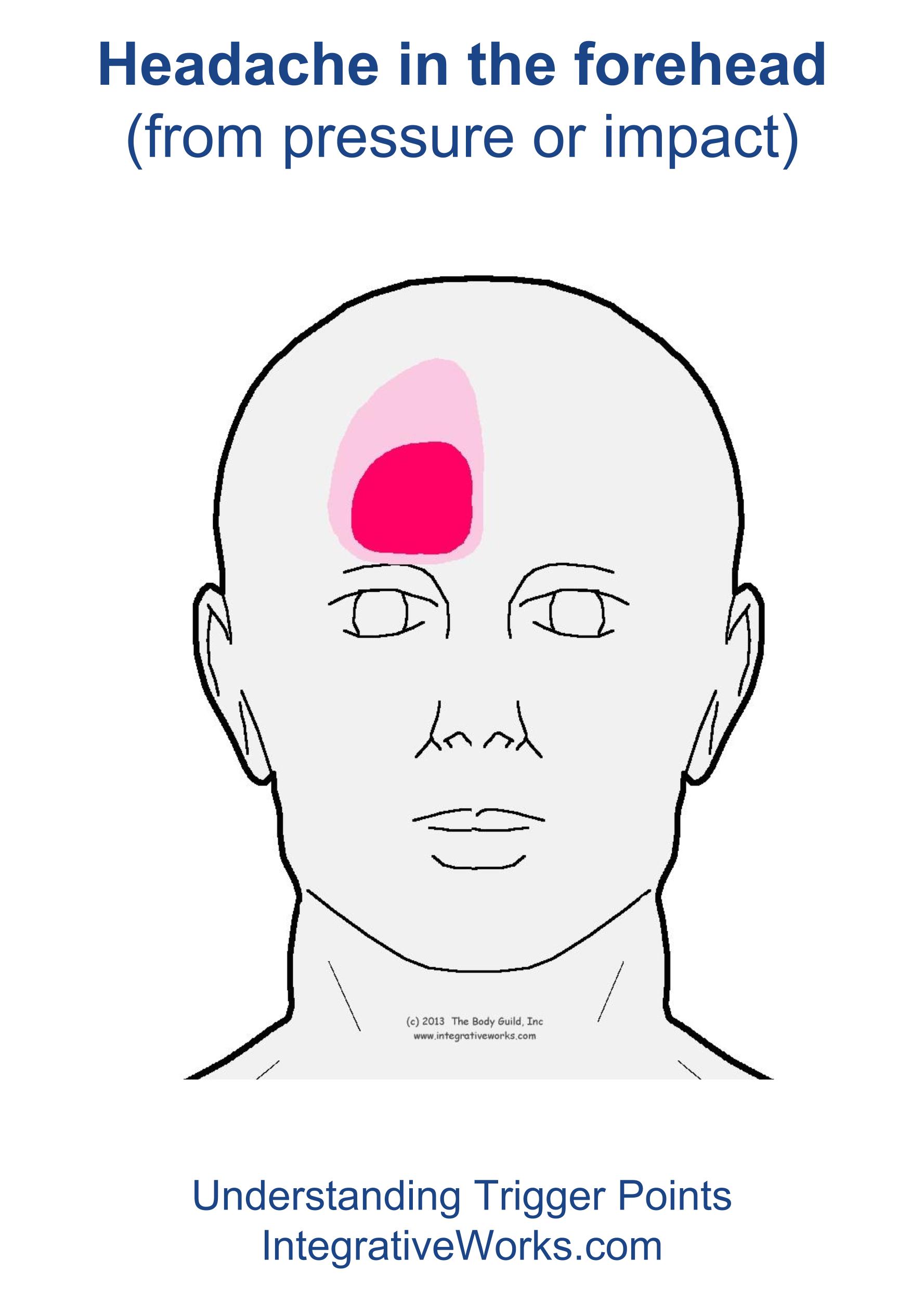 This may be caused by severe vomiting or diarrhea.
This may be caused by severe vomiting or diarrhea. This uses magnetic fields to produce detailed images of the body.
This uses magnetic fields to produce detailed images of the body.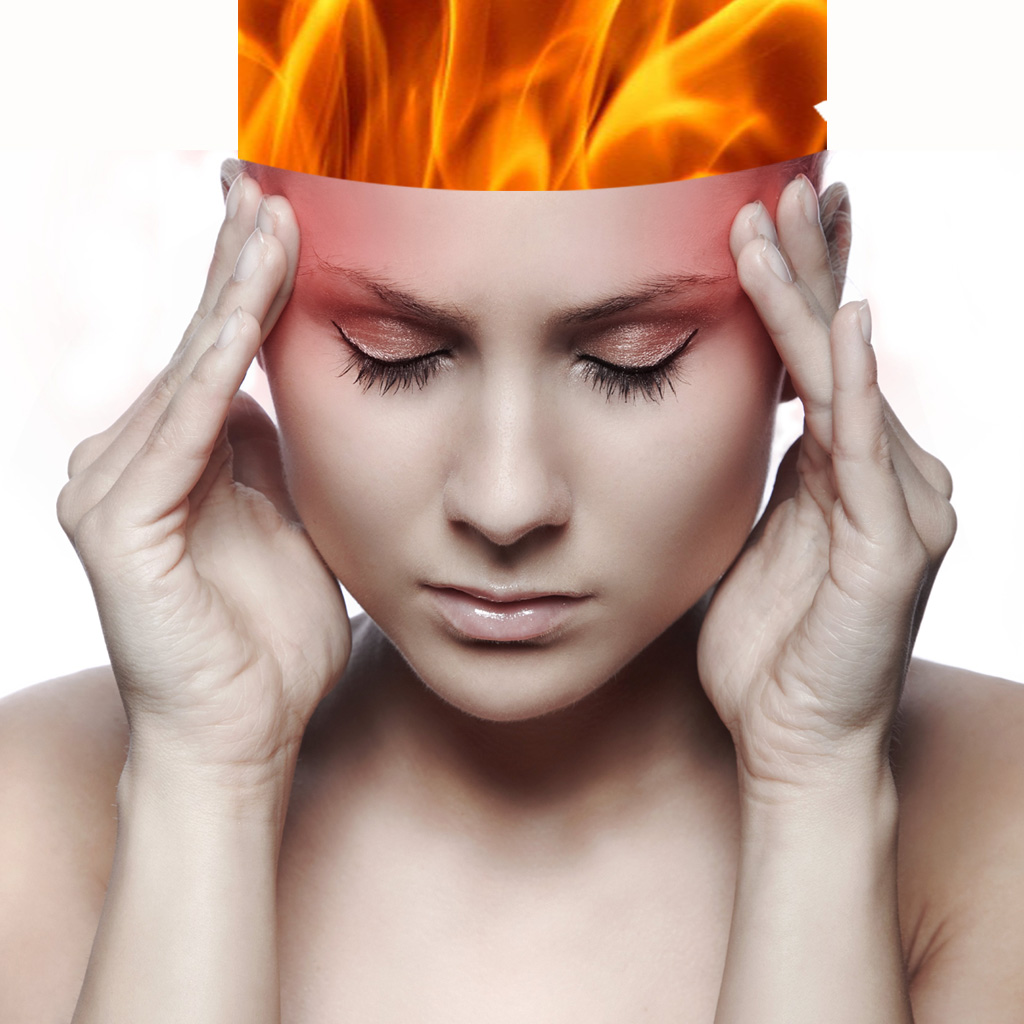 Secondary headaches may require emergency medical care, ”notes Fyodor Mikhnevich.
Secondary headaches may require emergency medical care, ”notes Fyodor Mikhnevich.